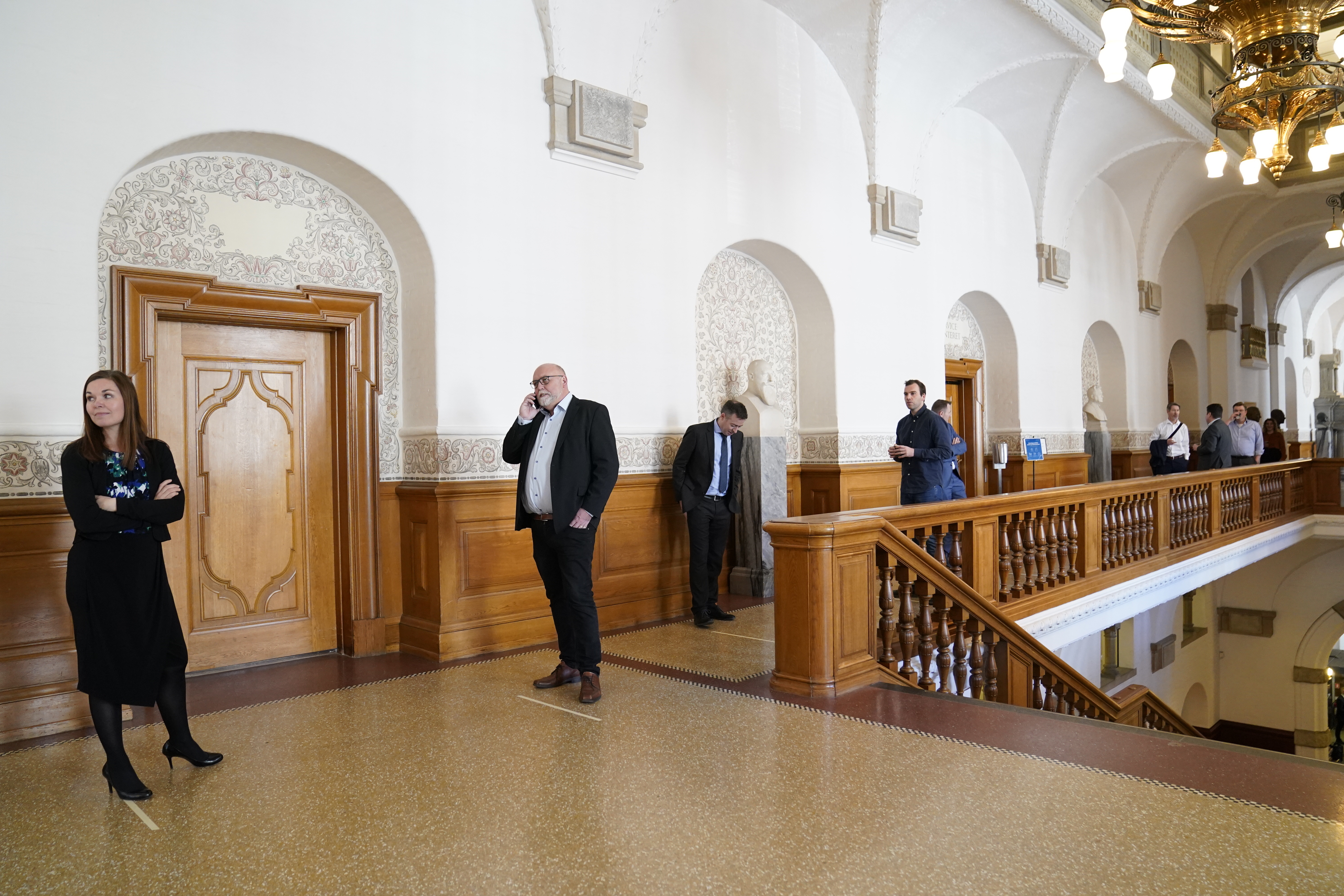The unleashing of cash by the US Congress to combat the catastrophe of the pandemic amounts to the traditional American prescription — in gargantuan form. The $2-trillion package of spending expands the standard unemployment insurance system, while setting aside a pool of money that is supposed to aid distressed companies.
It may prove to be weak medicine, a cocktail concocted for more familiar economic afflictions like a sudden loss of spending power caused by a stock market crash or a plunge in real estate prices.
This crisis is different. From Asia to Europe to North America, people are losing their jobs by government fiat. Workers are required to stay home to limit the spread of a deadly virus. Faced with a public health emergency, the government is suppressing business, rendering dubious the value of standard stimulus measures.
What is needed, say many economists, is not a spur to economic activity, but a comprehensive rescue for people harmed while normal life is frozen: the government should step in and issue pay cheques directly to prevent a disastrous wave of joblessness.
“We should definitely make every possible measure to keep people in their jobs,” said Pavlina R. Tcherneva, an economist at Bard College and the author of the forthcoming book, The Case for a Job Guarantee. “Essentially, the government becomes the employer of first resort,” she said. “If we were to do that today, we could stop some of the additional haemorrhage.”
But having the government nationalise American payrolls is the sort of idea that may seem as practical as sprinkling the landscape with fairy dust. It would cost untold trillions of dollars, yielding substantially larger budget deficits. In a country that tends to find cash for tax cuts and military spending while pleading insolvency to everything else, that makes it politically unimaginable.
Yet in some countries this idea is far from fantastical.
In Denmark, political parties from across the ideological spectrum joined with labour unions and employers associations this month to unite behind a plan that has the government covering 75 to 90 per cent of all worker salaries over the next three months, provided that companies refrain from layoffs.
The Danish government also agreed to cover costs like rent for companies that suffer a shortfall in revenues. These two elements are collectively estimated to cost 42.6 billion Danish kroner (about $6.27 billion), after factoring in the savings on the unemployment insurance system.
The Netherlands produced a similar scheme, with the government stepping in to cover 90 per cent of wages for firms that show losses of at least 20 percent of their revenue. The British government pledged to cover 80 per cent of wages, and on Thursday extended those protections to the self-employed.
The aim of this approach is to prevent the wrenching experience of mass unemployment, while allowing businesses to retain their people rather than firing and then hiring them again. Once normalcy returned, companies would be in position to quickly resume operations, restoring economic growth.
“There was quickly an understanding that we were in an exceptional situation where it was necessary to very quickly produce exceptional initiatives,” said Carl-Johan Dalgaard, an economist at the University of Copenhagen and chair of the Danish Economic Council, which advises policymakers. “If you can tide firms over and thereby reduce the severity of bankruptcies and firings, you can expedite the return to normal.”
The primary reason that this sort of approach appears unthinkable in the US is the same one that limits options to expanding health care and lowering the cost of university education: wealthy Americans have proved adept at shielding themselves from taxation.
“You don’t have a comprehensive welfare state in the United States, because it implies a politically unacceptable level of redistribution,” said Jacob F. Kierkegaard, a senior fellow at the Peterson Institute for International Economics in Washington. “As long as you’re not willing to tax wealthy people and give some of the money to people who are not wealthy, these sorts of options are not on the menu.”
In Denmark in 2018, the government collected tax revenue equal to 49 per cent of the nation’s annual economic output, according to the Organisation for Economic Cooperation and Development. In the Netherlands, that figure was 39 percent, and in Britain 34 percent.
In the US, tax revenues amounted to 24 per cent of annual economic output. That was down from 28 per cent in 2000, before huge tax cuts from the George W. Bush and Donald Trump administrations, with most of the benefits flowing to the wealthiest households.
The emergency threatening the global economy has reached such a magnitude that it demands a radical departure from the traditional policy playbook, assert many economists.
Nearly 3.3 million Americans filed for unemployment benefits last week, the worst week on record by far, and uglier numbers are likely ahead. With the US now the epicentre of the pandemic, and with the economy in virtual lockdown, the downturn could exceed the pain of the Great Recession a dozen years ago.
In that episode, the Obama administration deployed a traditional dose of stimulus. A steep drop in housing prices deprived homeowners of the credit that had been financing robust spending. The government had to step in and build roads and schools, the logic went, creating construction jobs. The newly employed would return to local shops and restaurants, whose workers would gain money to spend — a virtuous cycle.
But in this crisis, stimulating the economy is akin to throwing a sale inside a department store that has been emptied by the bomb squad. People are not avoiding malls because they lack money. They are being told to stay away for reasons of public health.
“This is not about stimulus,” said Heidi Shierholz, senior economist and director of policy at the Economy Policy Institute, a labor-oriented research institution in Washington. “We don’t want to get people back to work right now. You’re making sure people are OK while you’re on lockdown.”
By any reckoning, an American version of Denmark’s plan would cost a hefty sum. Last year, 157 million Americans were officially employed. About 53 million low-wage workers have median annual earnings of only $18,000 a year, according to the Brookings Institution. Simply covering their wages for six months would run $477 billion. If the government wrote paycheques for the entire American work force, which had a median income of $64,000, six months would cost $5 trillion.
Cumulative federal debt at the end of last year exceeded $23 trillion, which amounted to 105 percent of annual economic output, according to the Federal Reserve Bank of St. Louis. That was nearly double the level of two decades ago, before big tax-cutting began. Borrowing another $5 trillion would surely trigger warnings that the government was debasing the dollar and inviting inflation.
But Tcherneva, the economist, maintains that such analysis is wrong and ahistoric. During World War II, the US ran annual budget deficits that were more than five times the current size as a percentage of the economy. “We have unlimited fiscal space in terms of financing these programs,” she said. “We can’t buy into this old rhetoric of ‘We can’t afford x, y and z.’ Just last month, we were saying, ‘We can’t afford medical care.’ Now we need it desperately in the US.”










